Alita: Battle Angel sets offer a "respite" from dark sci-fi dystopia, say production designers
The post-apocalyptic architecture in sci-fi blockbuster Alita: Battle Angel is a diverse fusion of Panama's vibrant ruins and Hong Kong's Kowloon Walled City, say its creators.
Production designers Caylah Eddleblute and Steve Joyner told Dezeen that they looked to the "welcoming" nature of colourful Cuban and Latin American colonial architecture when creating the film set.
"We wanted to do something that was completely different and never seen before, so we looked to environments that were not typically used in these types of films," said Joyner.
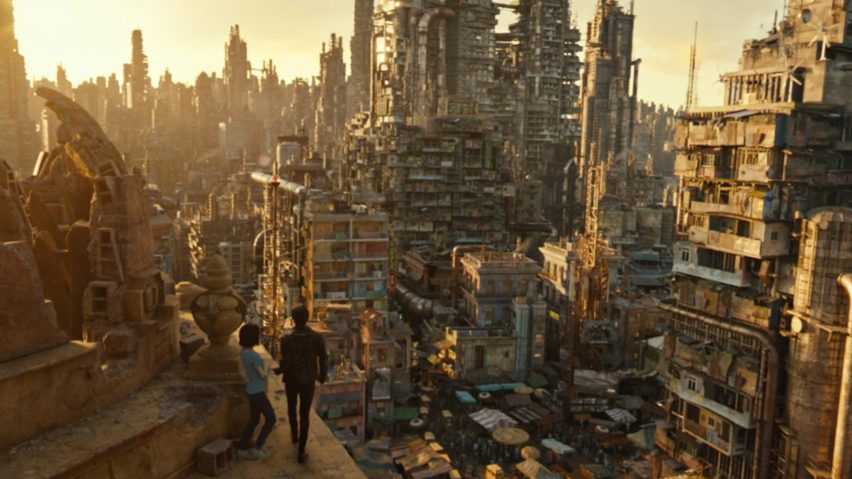
Located in an unspecified region of equatorial South America, the fictional Iron City's sun-drenched scenery goes against the aesthetic typical of sci-fi films.
This "gloomy and oppressive" style is epitomised by Ridley Scott's rain-slicked 1982 Blade Runner movie, which set the tone for the genre.
Designers "wanted to avoid recreating Blade Runner"
"We specifically wanted to avoid recreating Blade Runner," stated Joyner. "Science fiction has been imitated poorly so many times, as it's tough to pay homage to something that's so well done."
The designers deliberately looked elsewhere when creating the mood of the production design, specifically to the streets of Havana and Panama.
"A big part of the mandate early on was to not create Iron City to be dystopian in the way that many sci-fi settings are," explained the duo.
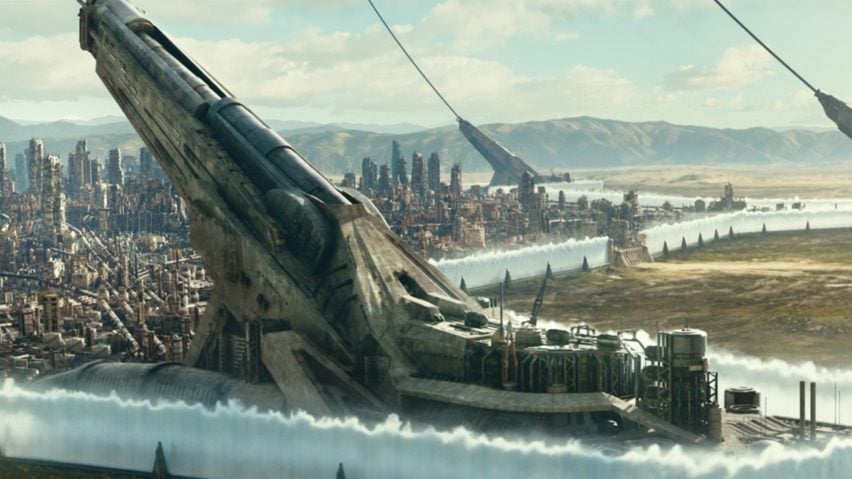
Alita: Battle Angel is a real-life adaptation of Yukito Kishiro's manga comic series Gunnm. It is set in a 26th-century, post-apocalyptic world that is suffering the effects of a destructive war 300 years prior, known as "the fall".
Home to survivors of the apocalypse, Iron City accommodates both ordinary people and cybernetically enhanced humans, who co-exist in the shadow of Zalem – a wealthy sky city that houses the elites.
Panama City and Havana's buildings were influences
The designers knew that Iron City had to be located on the equator to allow for the existence of a "space elevator" connecting Zalem to earth – a popular concept in sci-fi narratives of a cable fixed to the equator that reaches into space.
However this location also gave them the opportunity to create a warmer and more vibrant setting, which doesn't usually exist in dark sci-fi narratives. To achieve this, Eddleblute and Joyner looked to the colourful and weathered structures of the historic district of Panama City, and Cuba's capital city Havana.
"It's easy to do dark science-fiction, but to make something stand up in the harsh light of the sun and then look amazingly intriguing at night – that's the challenge," Joyner added.
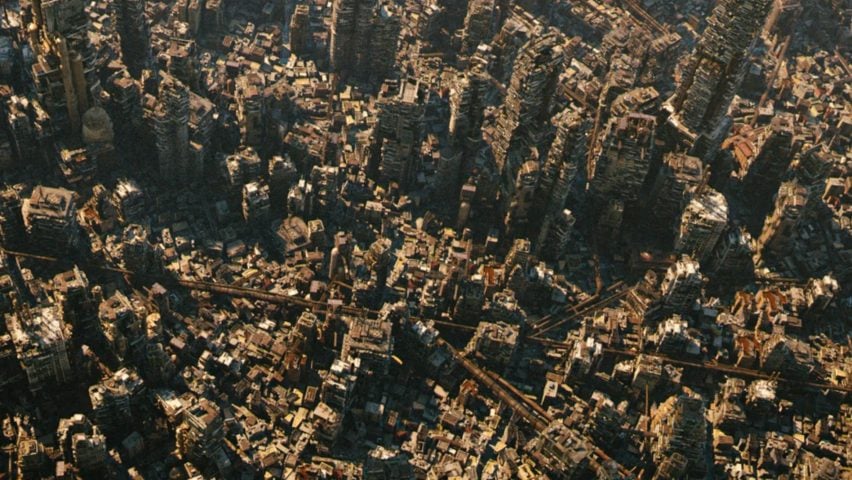
They built 62,000 square-feet of buildings to a height of 7.3 metres – around two storeys high – in the colourful style of classical colonial architecture.
This was further animated with street art and combined with visual elements of tech spread out across eight constructed streets.
Robert Polidori's photography series of Havana was a particular point of reference for the designers, as it captures the Cuban city's picturesque ruins in vibrant shades of orange, turquoise and lime green.
Closed packed city-scape inspired by Hong Kong
Made up of an intricate network of interconnecting streets, passages and "nooks", Iron City was envisioned as a "deeply layered place of abundant contrasts" by the film's writer and producer James Cameron.
In the early stages of production Cameron turned to a book by Greg Girard titled The City of Darkness, which documented life in Hong Kong's Kowloon Walled City that would further inform the production designers' work.
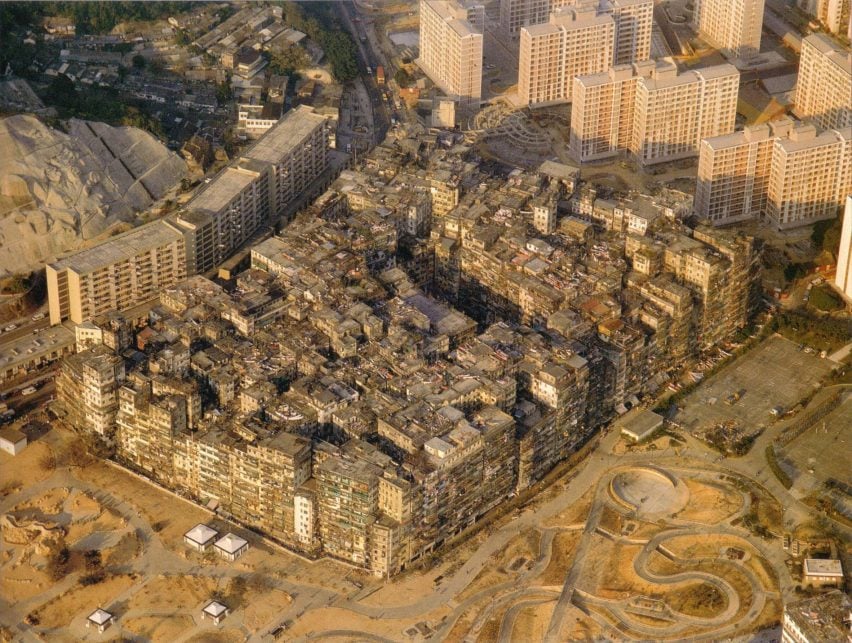
"As the last surviving major human settlement, the philosophy behind Iron City was that it would be a melting pot of people – a place where all cultures and all races have gathered to trade," said Joyner.
In the aftermath of the apocalypse, Iron City is overcrowded, allowing for a darker, more dystopian reference to China's Kowloon Walled City.
Before its demolition in the early 1990s, the tightly packed, interconnected high-rise blocks that make up the Walled City was the most densely populated place on earth. With an estimated 50,000 inhabitants, it became a microcosm of crime.
How people move in environments was key
While this informed the fictional metropolis' dense structure, the designers focused instead on using the sense of tightly packed bodies to establish a sense of openness and inclusion.
Eddleblute explained how she used what she learnt from her days working at Disney when aiming to create a welcoming environment: always use curves and soft edges.
In line with this idea, many of the buildings in Iron City are accented by arches, colonnades and rosette windows.
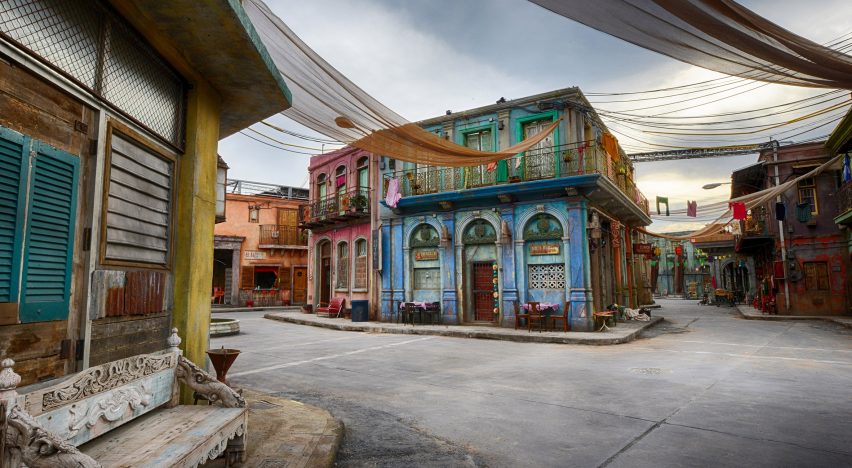
"It is designed as a place that is safe for people to go to, a sort of respite," she said. "We wanted it to feel warm and comforting."
"We didn't want the sets to be just a series of streets," said the duo. "We thought a lot about how people move in environments, and how cities have nooks and crannies and gathering spots where people congregate and live life."
"We wanted to make sure all our environments had depth to them," they continued. "So that people could be standing in the alleys, and vendors could be selling their wares in the market storefronts to passers by – we wanted to have that sense of community in the neighbourhood."
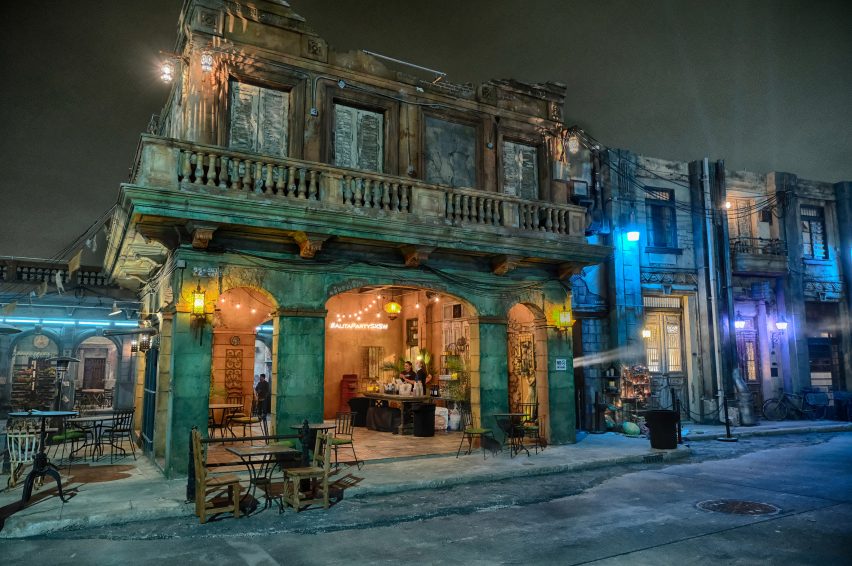
To create this sense of collectivity they also included a fountain, positioned in the middle of a square, as a central point where people gather.
"I wanted to make sure that we had a fountain somewhere in Iron City," Eddleblute explained. "Because that's an element that represents – and has done over centuries, no matter where you are – an area of congregation and community, with water being a symbol of life."
An archeological layering of multiple environments
When it came to overlaying the sets with CGI for the finished effect, the brightly coloured streets were completed with a hazy, sun-drenched look suggestive of a city "buzzing with life".
"No matter what is going on in Iron City, people are still people," explained Joyner. "We wanted to create a place where people still go about their daily lives, where there's culture and art and shopping, where people still go out dancing and enjoy the music."
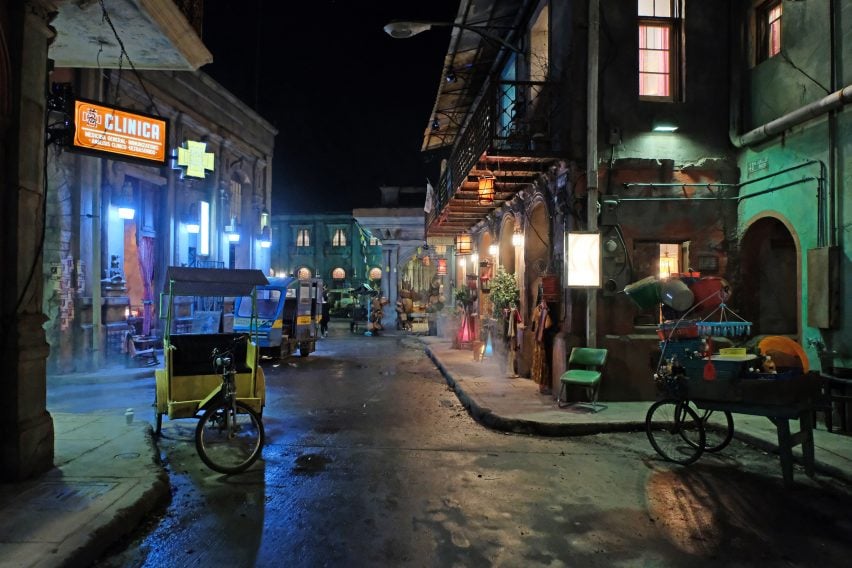
This, paired with the colourful and decaying architecture of Havana and Panama, made Iron City an unusual combination of two "really diverse and beautiful, multi-layered environments", the designers explained.
"We appropriated all of the layers of Panama City just like real archaeology, which has gleaming skyscrapers, colonial Latin American architecture and ancient stone ruins in the centre of town," explained Eddelbute.
The result is a vibrant cityscape of over-layered references that feels as if it has built up over time.
"We wanted to show that Iron City was built generations upon generations – it needed to feel like it was a part of history," said the designers.
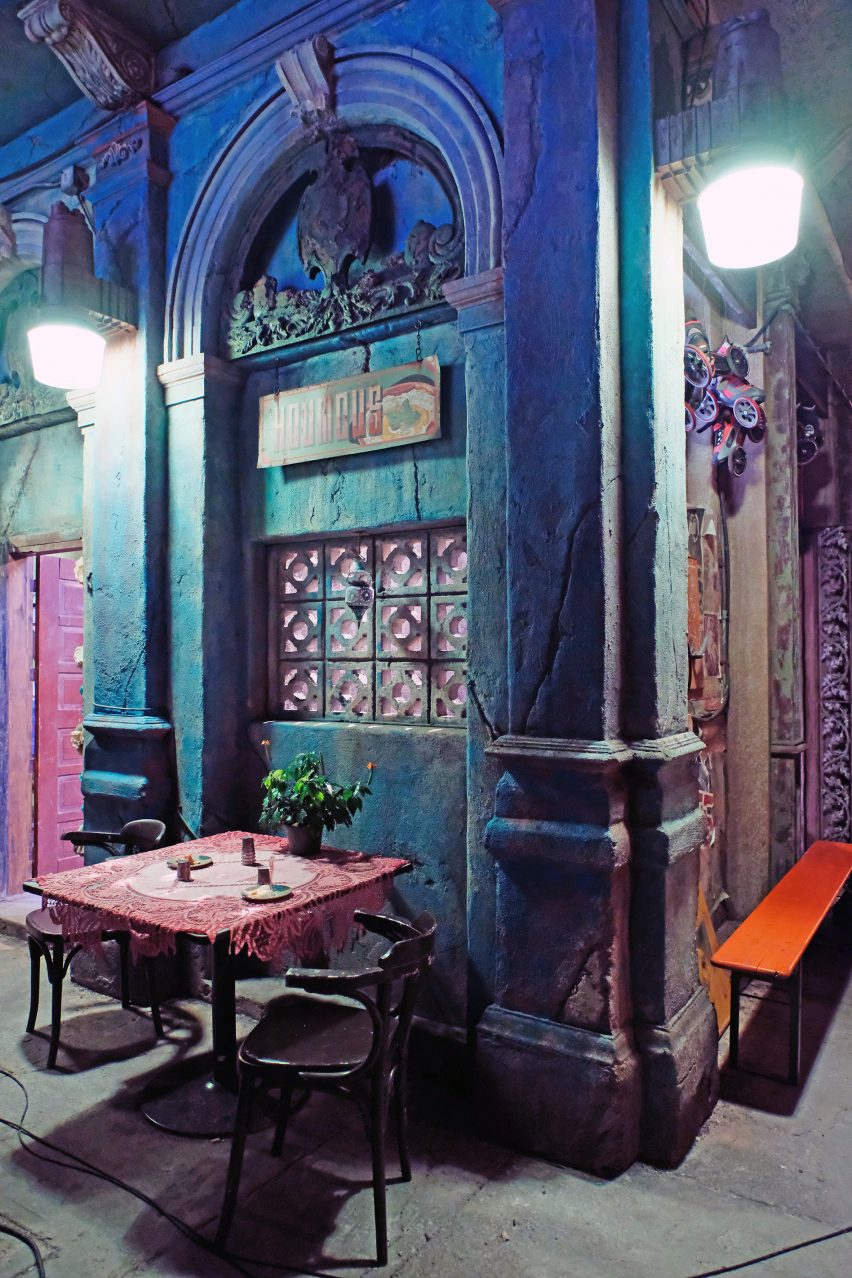
Alita: Battle Angel is just one of the many movies Eddelbute and Joyner have worked together on. Previous films include 2010 adventure sci-fi film Predators, 2014 thriller Sin City and the 2001 children's action film Spy Kids.